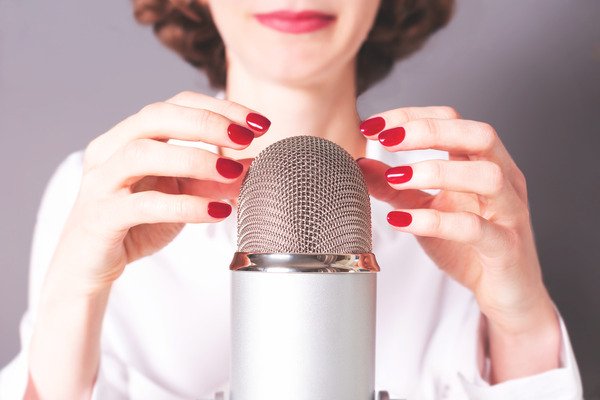
Surely you have heard or read about “triggers” somewhere. The exact translation from English to Spanish would be “trigger” or “trigger” and, in effect, A trigger is a stimulus that triggers or awakens an emotional and involuntary reaction in us In this sense, a trigger can be something as simple as the smell of freshly baked bread that we perceive when passing through a bakery and that prevents us from resisting this time to make the purchase.
That is to say, large and small industries make use of our emotional triggers all the time, which can be colors, smells, sounds or messages that lead us to have a certain reaction unconsciously and (almost) uncontrollably. But emotional triggers are not only sensory stimuli that we find in commercials. A trigger for you could be the tone of a person’s voice or someone raising their voice in front of you, as well as the smell of a perfume that reminds you of someone. They became triggers because they are stimuli that you connect with some experience(s) from the past.
Where do our triggers come from?
Triggers arise through very particular experiences in our lives, where we connect the stimulus to some shocking or alarming event that follows For example, the sound of the key opening the door of the house, because “every time dad came home, fights started and I had to hide. The sound of the door opening was like the bell that started the stage.” (client testimonial).
For a person who had such an experience in their childhood, this trigger (sound of the key), already in their adult life, triggers the same emotions that they experienced as a child, such as fear and the desire to run away. But triggers can also be postures or forms of treatment during a conversation. How a person speaks to you, their tone of voice or the role they assign to you in the conversation.
For example, when someone talks to you non-stop and you don’t feel heard, just like what happened to you with your mother when you were a teenager. When someone plays a bad joke on you and you suddenly feel humiliated, although the joke may not have been that serious, nor with this intention. But you suffered bullying at school and that makes you relive the same feeling of shame that your classmates caused in you.
What does it mean to be triggered?
That you feel triggered means that someone or something “pressed a button” that triggers an emotional reaction in you, usually very disproportionate, to the event As I described in the previous example: Hearing someone open a door should not make you afraid and want to run away. The trigger is then the stimulus that automatically connects a sensation with an involuntary emotional reaction. It is the starting point of a path that has been neurologically traced in you. In your past this connection was made due to a real threat or experience, but in your current life it no longer makes sense.
Now, emotional, disproportionate and involuntary reactions can obviously produce misunderstandings. These are the moments when no one understands what’s happening to you, you suddenly feel bad, uncomfortable, want to cry, scream or want to run away. The ways of reacting can be very diverse, but it is always a sensation that suddenly overtakes you.
It could also be that it is someone you dislike and you don’t really know why. He surely triggers some sensation in you (fear, inferiority, desire to compete, etc.). A very common reaction we have when we find ourselves in this state is that we blame others: “You made me feel this way.”, “You provoked me.”, “You should know that it affects me.” But others are not to blame for our triggers and it is not their responsibility to take care of us in this sense.

How to stop blindly following your emotions when you feel “triggered”?
We all have situations or stimuli that “trigger” us and it is solely our responsibility to work on them and give ourselves in these moments what we really need. If it seems like right now we need to explode and we don’t want to hurt other people, what alternatives are there?
Step one: understand that it’s not the situation, it’s you
The first step is to focus on the situation. Being able to identify that what you feel at this moment is not because of the situation itself, but because you associate something with this sensation that comes from a personal experience of yours. That’s not so easy at first, because first you have to know your triggers. Recall times in the past where you reacted disproportionately or where others told you that you overreacted.
Maybe there are specific situations where you already know that you always get nervous, angry, want to go out, or in which you feel in some other way uncomfortable The sensations that a trigger produces can be very different, which is why it also helps to carefully record what exactly you are feeling at the moment.
Step two: connect with the body and focus on breathing
A common reaction when we feel triggered and we already identify it is to actively fight that feeling. For example, you are already in a moment where you realized that someone pressed a button or a weak point in you and you try to cope with the anxiety that it produces in you, by pretending that nothing has happened. Maybe you tell yourself something like: “Ok, you feel provoked, but now you need to stay calm.” Or you just mentally repeat this mantra “stay calm, stay calm…”
It may be helpful to remind yourself that you don’t want to overact or explode right now At the same time, it has the pressure cooker effect because you don’t allow yourself to feel what you feel at the moment and you finally do double duty by containing the emotion and following the thread of the conversation trying not to let anyone notice.
An alternative is to recognize with presence and acceptance. That is, instead of fighting the emotion, you sit with it. That is different than removing it or repressing it. Sitting with the emotion means recognizing it, feeling it, and accepting it without directly expressing it. It could be telling you something like: “Oh, what this other person told me was a trigger for me, I feel like… (run, attack, I’m frozen, etc.).” It is recognizing what happened and understanding what you feel without judging yourself.
So pay close attention: what is your body feeling right now? Maybe your hands sweat, your heart rate accelerates, you get restless, you want to take a step back or get away from the place completely. There is no need to fight the emotion too much at this moment, because emotions are like waves that come and go. If you sit with your emotion and focus on your body and your breathing for this moment, you give it space. This time, many times you can’t do anything else, just trust that the emotion will go away sooner or later
Step three: listen to what you need now
By being connected to your body and your breathing, it will be easier for you to identify what you really need. Maybe you really need to get away for a moment, be alone until the wave of emotions passes. Maybe some movement or caress helps you, like giving yourself a hug, your hand on your heart, or taking some distance. You can say something like: “With what’s happening now I feel a little overwhelmed, I’m going to take a walk and process it.”
It’s not about running away from a conflict, but in a situation where you are triggered, you can’t expect too much from yourself You are on alert and it is not a condition where you will be in the best moment to resolve a conflict. Taking care of yourself right now and waiting out the internal storm is the best thing you can do.
Step four: explore the situation through questions
I take as an example a situation that can be a trigger for many people. A colleague gives us bad feedback on our work, indicating something like: “You need to improve on points A and B.” For many, criticism of work (no matter how constructive it may be) is a trigger, because it indirectly tells us that “we lack it,” which triggers feelings of guilt or shame that can be very uncomfortable. A very common reaction to this trigger is that we desperately begin to defend ourselves, justify our decisions or alleged shortcomings and give long explanations of why and how we work this way, although it would have been enough to give a short answer like: “Thanks for telling me, I will look into it.” In a situation like this the following questions can help: What happened now, what did it trigger in me (what feelings)? A possible response: I felt offended, afraid of what could happen because of this observation.
Why do I trigger it in me? What is my personal issue that led me to have this reaction? Because it awakens in me a fear of not being good enough, that I am lacking and that I am exposed. Why is this something important to me? It is important for me to be good and feel that I am enough, because when they make me understand that I am lacking, I relate it to rejection and fear of being excluded. This process of exploration again helps to connect with oneself within the situation and introduce some logical reasoning. You no longer judge yourself, nor are you afraid of what you feel, but you can put it in context.
Working on triggers is a process
Following these steps as I described them means committing to daily personal knowledge work. It involves paying attention to our ways of reacting in different circumstances and taking a step back for self-observation. When you just start working on your triggers, it is very likely that you will not realize when it happens but later.
In this case you can also follow the steps afterwards, although you no longer feel the same as during the situation. You can remember the moment and record what happened to you. With practice, your presence at these moments will increase and you will be able to prevent It is also important to share these observations with someone. It may be with friends who are in a similar process or with a processional as part of psychotherapy.









